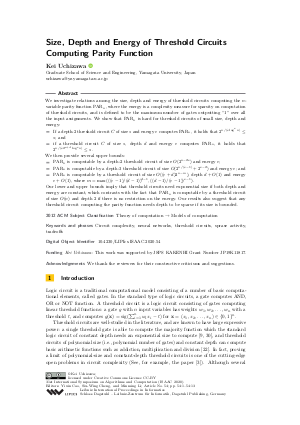LIPIcs.ISAAC.2020.54.pdf
- Filesize: 459 kB
- 13 pages

 Creative Commons Attribution 3.0 Unported license
Creative Commons Attribution 3.0 Unported license































Feedback for Dagstuhl Publishing